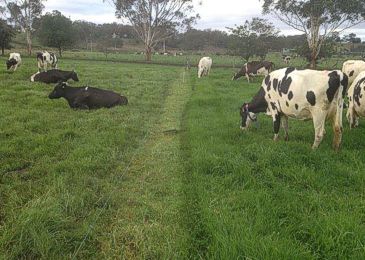
Designer diets for cows
Dairy’s top young researchers are tackling some of the big challenges likely to face the industry in the
coming years including climate change, fertilisers and animal health and welfare.

Dairy’s top young researchers are tackling some of the big challenges likely to face the industry in the
coming years including climate change, fertilisers and animal health and welfare.

Automatic milking farms have two options for moving the cows to and from the dairy: voluntary cow movement (either ‘controlled’ or ‘free’) and batch milking. FutureDairy Project Leader, Dr Kendra Kerrisk says the choice of cow movement in an automatic milking system (AMS) is influenced by personal preference and the availability of
infrastructure and labour.
Dairy’s top young researchers are tackling some of the big challenges likely to face the industry in the
coming years including climate change, fertilisers and animal health and welfare.

Dairyfarmers considering automatic milking systems (AMS) frequently ask what percentage of their herd will need to be culled as having udders that are unsuitable for robotic cup attachment.

With increasing numbers of Australian dairy cows now being milked by robots, researchers are looking at a range of exciting ways to use robots on farm, and one that has already shown promise is the use of robots to herd cattle from the paddock to the dairy. Delegates at the Dairy Research Foundation’s symposium, to be held at Kiama on 4, 5 July will get a sneak peak of Rover, a prototype robot, in action.

FutureDairy has launched a web-based resource on automatic milking systems (AMS) for large herds.
Project Leader Associate Professor Kendra Kerrisk said the resource was designed for people at various stages in the robotic milking journey.